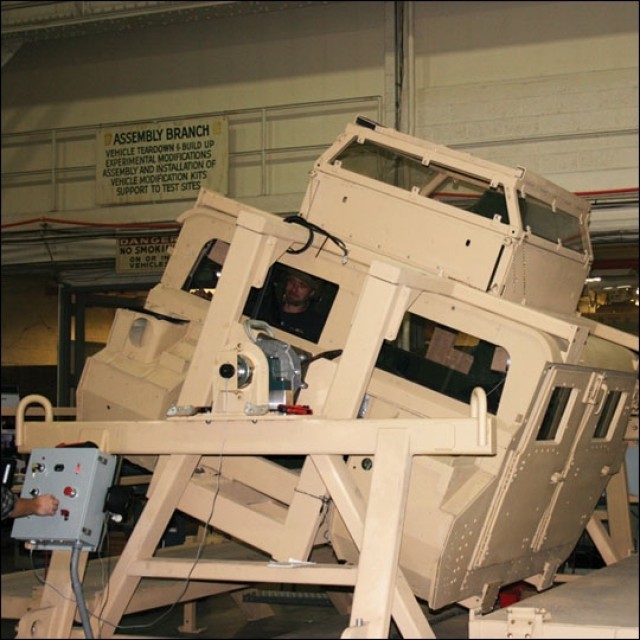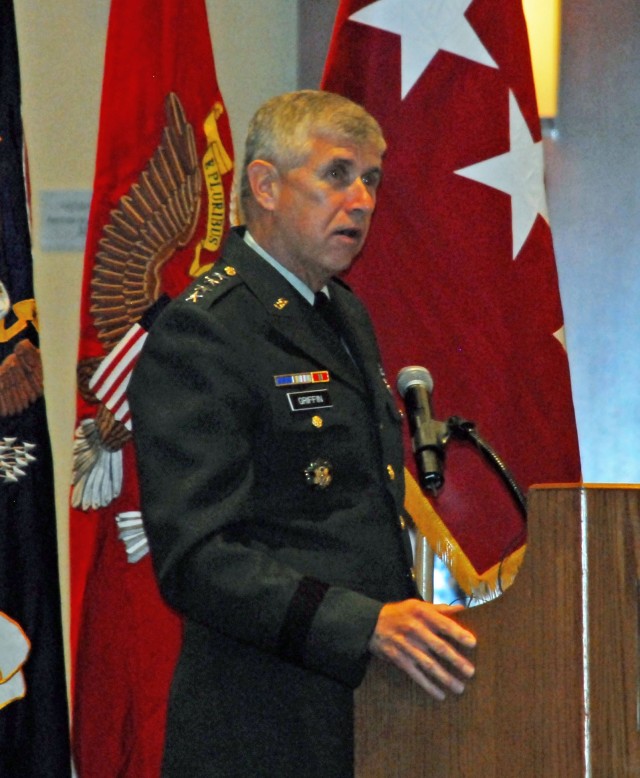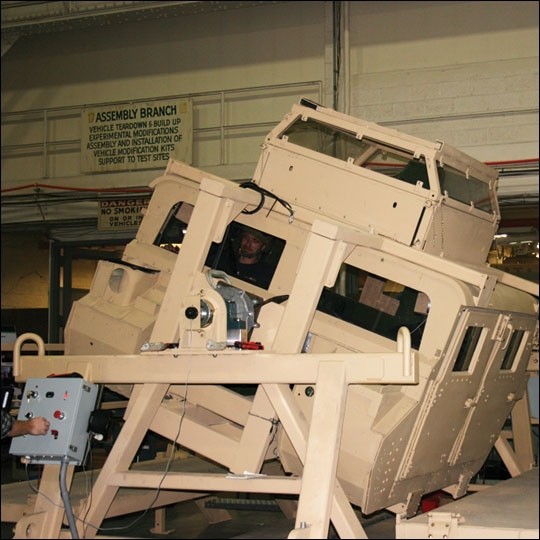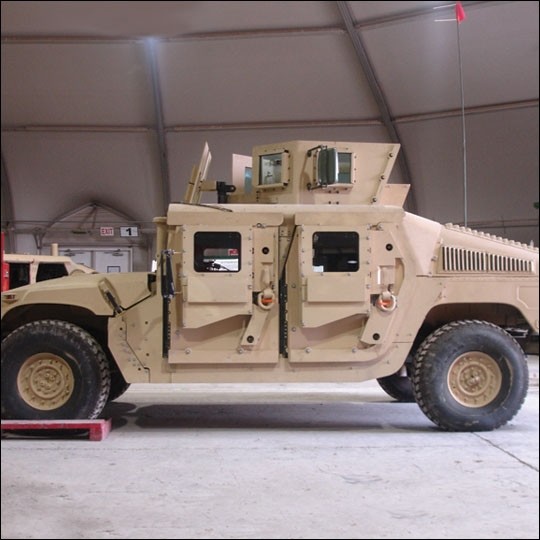WASHINGTON (Army News Service, June 12, 2008) - The Army's Top Ten Greatest Inventions for 2007 were recognized in a luncheon ceremony Thursday in Arlington, Va.
Gen. Benjamin S. Griffin, commanding general, U.S. Army Materiel Command, praised various research institutions for their inventions and outstanding achievements in providing the best technological solutions for Soldiers.
"It's a tremendous accomplishment," Griffin said, "I'm very proud to be a part of this. I want to congratulate you all."
Currently in its sixth year, the program chooses winners based on their impact on Army capabilities, inventiveness and potential benefits outside the Army. Three of the top inventions focused on increased Soldier survivability, providing both physical and mental protection.
Griffin thanked the awardees for their critical contributions to modern warfare.
"When you talk to units in the field, they know about them," he said of the inventions. "They use them."
Secretary of the Army Pete Geren made a surprise visit to the ceremony, assisting Griffin in handing out the awards and shaking hands with the winners.
Nominations for the program were submitted across the Army laboratory community, and nine of the 10 recipients are elements of the U.S. Army Research, Development and Engineering Command.
All 10 of the inventions have been deployed in theater.
The Army Greatest Inventions of 2007 are:
<b> Improvised Explosive Device Interrogation Arm </b>, U.S. Army Communications-Electronics Research, Development and Engineering Center. The Interrogation Arm is totally operational from inside mine protected vehicles and provides stand-off detection capability, can detect metal, free- and pry-lift objects, and carry out shallow digging. A camera allows the operator to view objects at the end of the arm.
"The arm was created to help detect improvised explosive devices from greater stand-off distances," Larry Jackson, team leader, said.
When using the arm, the Soldier is at a distance of about 20-30 feet away, Jackson explained.
Interrogation of suspect threats using the arm provides an increased level of survivability for vehicle crews, due to the larger distance between the Soldier and the threat.
<b> Damage Control Resuscitation of Severely Injured Soldiers </b>, U.S. Army Institute of Surgical Research. Fielded in January of 2007, Damage Control Resuscitation limits fluid resuscitation, stabilizing the patient's blood pressure to minimize renewed bleeding from recently formed blood clots. Blood volume is restored using plasma along as the primary resuscitation fluid, with packed red blood cells.
<b> Unmanned Aircraft System Shadow 200 Communications Relay System </b>, U.S. Army Aviation and Missile Research, Development and Engineering Center. The CRS improves two-way communications when operating beyond the limits of single-channel ground and system radios. It provides improved situational awareness, call-for-fire capability, and "imminent danger" communication to Soldiers.
<b> HMMWV Egress Assistance Trainer </b>, U.S. Army Tank Automotive Research, Development and Engineering Center. HEAT teaches Soldiers how to react in a vehicle rollover situation through properly training them on how to open safety restraints and exit a Humvee from several rotated positions. It also helps Soldiers overcome the natural panic and fear that is associated with rollover incidents.
The simulator is a replica Humvee cab, which physically rolls Soldiers over, that allows them to test their training and physically perform an egress.
"When you are flipped over, things become difficult to do," Gerard Szczerbinski, member of the development team, said.
Things that were simple when right-side up, like opening doors and removing seatbelts, become complicated when disoriented, he explained.
Now required for all Soldiers, HEAT has increased the survival rate in rollover incidents since the training was instituted.
<b> Reconnaissance Vehicle System </b>, U.S. Army Aviation and Missile Research, Development and Engineering Center. This vehicle system combines explosive device detection, defeat and interrogation capabilities onto an integrated platform. It allows Soldiers to observe and engage threats from a greater distance during route clearance.
<b> Objective Gunner Protection Kit </b>, U.S. Army Armament Research, Development and Engineering Center. The kit provides a common force protection system capable of integration onto multiple vehicle platforms. Its integrated turret is mounted on vehicles, providing all-over ballistic protection from explosive device fragmentation and small arms fire. More than 8,000 kits were fielded in 2007.
The kit is "designed primarily to protect the gunner," Sanjay Parimi, project designer explained. It has a battery-powered motorized traversing unit, which allows Soldiers to rotate the kit and gun turret using a joystick. This innovation reduces distraction and enables the gunner to focus on the situation at hand, Parimi said.
Lead designer Thom Kiel agreed, emphasizing that a key component of the kit is its ability to be integrated with common Army weapons.
Parimi and Kiel added the kit could be adapted for civilian use in police forces.
<b> Picatinny Blast Shield for Light Armored Vehicle </b>, U.S. Army Armament Research, Development and Engineering Center. The PBS is a modular device that protects vehicles from small arms fire and fragmentation from explosive devices. It transparent armor mounts onto vehicles to provide front, side and rear protection.
Similar to the Objective Gunner Protection Kit, the PBS was specifically designed with the light armored vehicles Marines use in mind, Kiel said.
<b> XM982 Excalibur Precision Guided Extended Range Artillery Projectile </b>, U.S. Army Armament Research, Development and Engineering Center. Excalibur provides precision guidance, extended range and greater accuracy through an automatic update of the navigation system. It gives the Warfighter unmatched precision and lethality, which is critical in urban warfare, where the risk of collateral damage is high.
<b> M110 7.62mm Semi-Automatic Sniper System </b>, U.S. Army Armament Research, Development and Engineering Center. The SASS high capacity, ammo configurable, quick change magazines enable suppressed, increased rate of fire precision lethality against personnel and light materiel targets.
<b> Self Protective Adaptive Roller Kit </b>, U.S. Army Tank Automotive Research, Development and Engineering Cenetr. SPARK provides additional stand-off protection to vehicles and crew against pressure-activated or victim operated explosive devices, and can be installed in various configurations for greater coverage.








Social Sharing